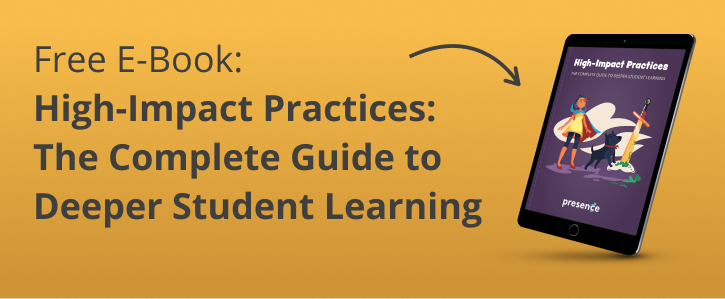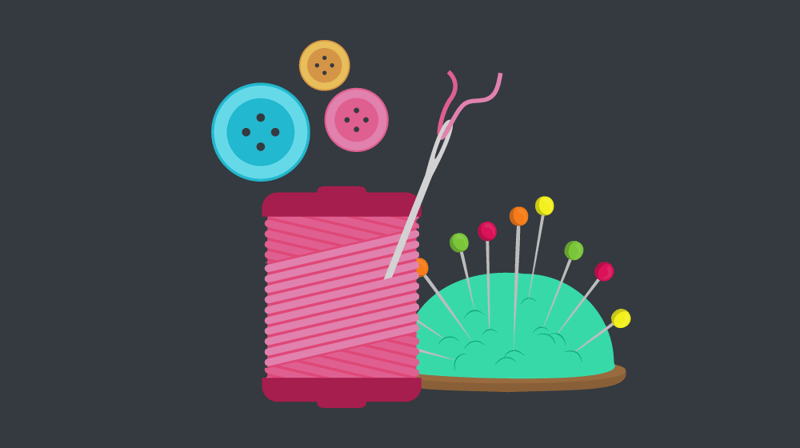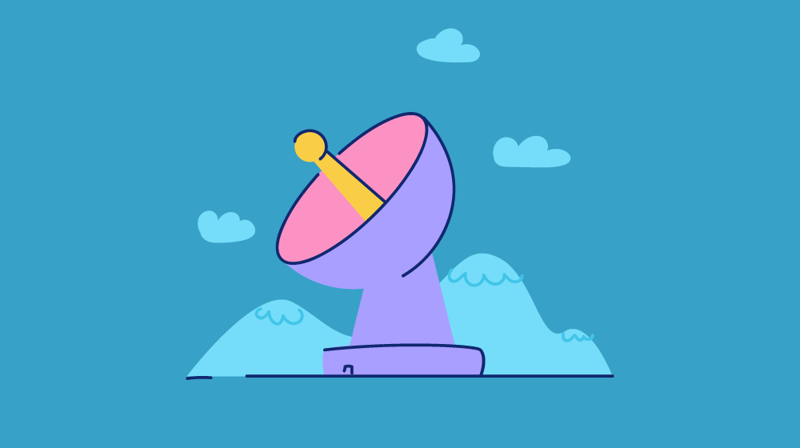Let’s face it: many common student programs are no match for TikTok, YouTube, or FaceTime.
But it can be hard to get creative and match the engagement level of the internet. Over the past few years, I’ve realized that my department has a problem with just recycling student programs year after year.
But, in the fall of 2020, I found a solution. I worked with two brilliant colleagues to design a workshop that, on the surface, looks like any other educational program. Yet, the steps we took to get there completely changed my perspective on how to facilitate student learning.
In this post, I’ll share what I learned and provide you with four key steps to help you plan your next workshop, training session, or other activity with students’ needs, interests, and personalities in mind.
1. Get to know the attendees
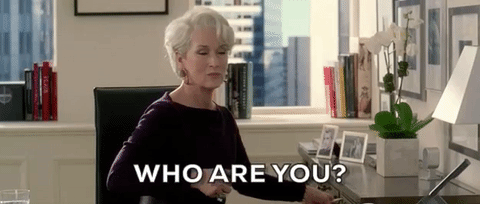
Planning any successful event begins with learning about your attendees. ”College student” is just one of many identities that your participants will bring with them to your programming.
Dr. Michael A. Goodman, an experienced professor within student affairs masters and doctoral programs, challenges student affairs scholar-practitioners to examine the following questions:
- Who are your students?
- What are their backgrounds?
- What are their interests?
- What are their previous experiences?
- What prior knowledge do they have about your session’s topic?
Maybe some of your students are parents or are English majors with a big upcoming assignment due. Maybe others are experiencing deep sadness and grief regarding racial violence.
Whatever the case, the answers to these questions will lead you to a greater understanding of the people you are attempting to serve and result in stronger programming that speaks to the hearts and minds of students.
2. Artfully craft the purpose of your event
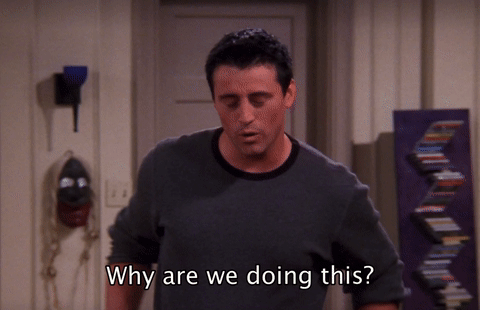
According to Priya Parker, master facilitator and author of the NY Times bestseller The Art of Gathering, people often substitute the category of an event for its purpose.
If, for example, the only thing you know about the students you work with is that they’re RAs, then you may assume that the purpose of the Wednesday all-staff meeting is to meet with RAs. But that is not the purpose of the meeting; it’s the category.
If, however, you know what the students are currently experiencing or what challenges they are facing, the purpose of the meeting might be to connect for support around a shared difficult experience, to engage in community care, or to rekindle passion within the student staff.
Uncovering the purpose for the event is a lot like a root cause analysis or answering a two-year-old who recently discovered the word why.
The following example showcases what Parker calls drilling down into an event’s purpose. First, you state what you want to do, and then you continually ask yourself “why?” until you arrive at a purpose that you are passionate about.
I want to bring all of the RAs together next Friday afternoon for a pizza party.
- Why?
- Because we always do this around finals.
- Why?
- To help them have fun before an intense next two weeks.
- Why?
- So they can slow down and recenter amidst the busyness of college.
- Why?
- Because being present and grounded is integral to their mental health and subsequent ability to do well on their exams.
- And why is that important?
- Because we are invested in the lives of our RAs, and know that finals can be a stressful time for everyone. This program can help us to get ahead of some of that stress, check in with students individually, and see who might need more support. It also connects the RAs to each other and helps them to lean on the community for support.
- Oh!
Through this example, you’ll come to understand that this program is about much more than pizza and relaxation; it’s about community, self-care, mental health, developing coping skills, and academic success.
So, you now know that events should be unique to the students you are working with and have a clear purpose. Additionally, Parker says that gatherings should be disputable. By disputable, she means that events should not be one-size-fits-all, they should be specific enough that some people will decline the invitation. This way, you can be sure that the people who choose to show up to your events actually want to be there, and are not simply following the path of least resistance.
To determine the specific purpose of your event, start with a statement of what you are planning to do, and ask yourself why until you come up with something that is unique and disputable.
3. Determine how you will achieve the purpose
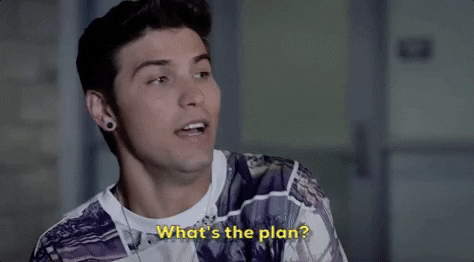
Now that you know the purpose of the event, it is time to design the session. The purpose of the example event is to bring RAs together as a community to provide respite from the busy semester, encourage self-care, and strengthen interpersonal relationships.
The next question you should ask is, “what is the best way to do that?”.
Should this event be a reflective nature walk followed by a healthy lunch under a pavilion? Maybe the counseling center staff should facilitate a guided meditation and then open the floor for questions. Maybe it should be a restorative circle followed by lunch at a local campus restaurant, and each student should receive a care package that includes a list of self-care tips.
Parker says that your purpose should guide your decision-making and will serve as a bouncer during the planning process. The purpose of the RA gathering prevents you from, say, planning an educational workshop-style program for mental health because the students are burnt out and are in need of something restorative. The purpose also prevents you from making it a multi-day event when student time is so limited. Additionally, the purpose inspires you to design a meaningful event to meet an identified student need.
The following questions adapted from Dr. Goodman’s philosophy will help you determine the best way to accomplish the purpose:
- Is your session a workshop? A training? A class? A retreat?
- What is the agenda and format of your session?
- What is the rationale for this particular design?
Your rationale will differ depending on how you approach your work. Maybe you will look to your own informal student engagement theory that you’ve developed throughout your career or seek inspiration from field literature. Either way, what’s most important is that you have a rationale that speaks to why your plan is best for students — not what’s most convenient for you, least expensive, or best for the department’s public image.
Once you have a strong rationale, it is time to plan how you will assess whether you’ve achieved your purpose.
4. Develop learning outcomes and assessment strategies
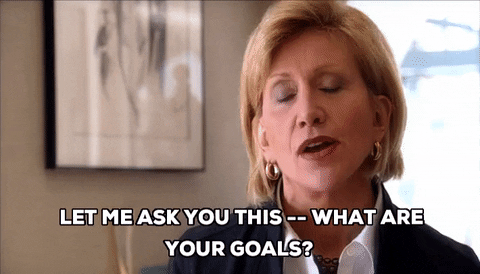
This might be the most important step. I know assessment is not always the most fun part of programming, but it’s what helps you develop stronger future programs. Plus, you’ve put so much time and energy into planning this program; don’t you want to know if it was all worth it?
Dr. Goodman’s philosophy reminds SA pros that assessment does not have to be scary. He says that you should ask these three questions when planning your program:
- How will you assess what students have learned?
- How will you evaluate if students met the learning outcomes?
- What are the potential limitations of your assessment?
You might plan to ask the RAs to share out, “round-robin” style in the large group, one action they are committed to taking as a result of this program. Or, maybe you will conduct an informal pre- and post-test in your one-on-ones with each RA the weeks before and after the program.
After answering Goodman’s questions, you might realize that you are not comfortable with your answers and you’ll want to develop a stronger assessment plan. Fortunately, Presence has all the tools you need to do so, including real-time analytics and dynamic visual reporting. You can also find some great advice on setting learning outcomes and frameworks here.
If you met your goals, you can hold onto this program as something that worked well for this group of students and know that you could potentially reimagine something similar in the future for other students with similar needs. But if you didn’t meet your goals, no worries! The information collected during the assessment will help you to create a stronger program next time.
What questions do you still have about designing engaging and intentional student programs? Connect with us on Twitter @themoderncampus or @LoraeVB.
